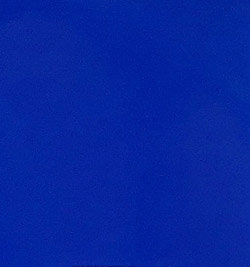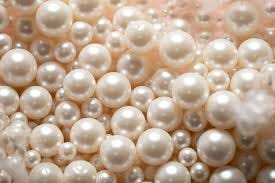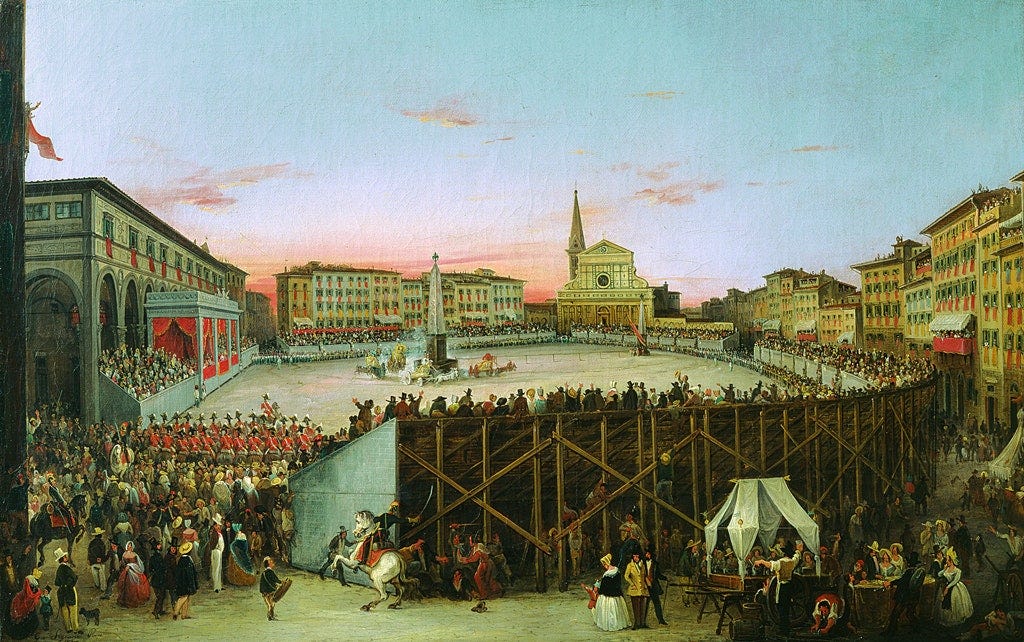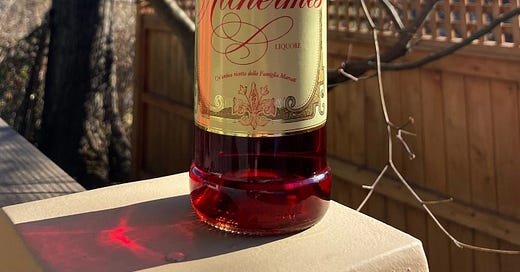Living in New England at this time of year can be disheartening: the sun rises long after I do; dark descends while there’s still a “4” in the “o’clock;” and, even when the predicted 12” of snow doesn’t materialize, my victory dance en route to my car is likely to be interrupted by the realization that the doors are frozen shut.
Still, I like residing in a place with seasons. We have five here in New England, the extra one being “mud season,” which lasts from approximately mid-March through Memorial Day. Winter is my least favorite; however, the advantage of total crap weather is that I can lie in bed guilt-free and read all day; soak in a hot, bubbly bath; or sample alchermes.
“Whoa, hold it,” you may be saying. “I’m allowed to stay in bed and read all day?”
Yes, per the rules of “adulting,” which means making decisions about how to while away a snowy Sunday in January. Pro tip if you choose to read in bed all day: pile at least a dozen books on your bedside table so you can select just the right one without having to de-hibernate. For similar reasons, summon any available family member when you need water, a snack, or perhaps a glass of alchermes.
“Again with the alchermes,” you might now be saying. “Care to enlighten me?”
Alchermes, which sometimes is spelled “alkermes,” is a sweet, bright red, highly alcoholic liqueur—we’re talking 20-35% here—manufactured primarily in Tuscany, though it originated in the Middle East.
I learned about the existence of alchermes while I was researching Officina Profumo-Farmaceutica di Santa Maria Novella for my last post and tumbled down an online rabbit hole, another activity that is acceptable here in Winterfell. Especially when you come across internet gold, in this case a fascinating article on the history of alchermes.

The earliest known iteration of confectio alchermes hails from Baghdad, where it was used for medicinal purposes. Purportedly “a wonderful strengthener, curing palpitations of the heart, putting an end to fainting spells, and restoring minds disturbed by madness and depression,” confectio alchermes was an early 800s CE wonder drug, one available only to the ruling classes and others who were fabulously wealthy.
Why? Get a load of these ingredients:
a pound of red silk “recently dyed with kermes” (kermes are insects, and the dye derived from them was over-the-top expensive)
1.5 lbs. of sugar
ambergris
cinnamon
aloes
gold leaf
musk
pulverized lapis lazuli and white pearls.



In the mid-1700s, the Dominican friars at Santa Maria Novella in Florence alchemized alchermes into a liqueur. Yes, the very Dominican friars who launched a perfume-making operation in 1221 at the profumo-farmaceutica I visited in November, the source of my beloved L’Iris perfume, a.k.a. bottled memories of my recent trip.
Alchermes was the “it” liqueur for a few decades in the 18th century before being replaced by the far inferior, rubbery-tasting Campari.
IMHO, of course.
I spent several happy hours down my Santa Maria Novella/alchermes rabbit hole. I learned, for example, that that piazza in front of the Santa Maria Novella Basilica once hosted chariot races—hence, the course-marking obelisks that 21st century travelers might spot on their way to the nearby train station.
Then, I made the interesting historical connection that chariot race winners won velvet fabric, which might not seem like a great prize; however, high-end textiles, especially red ones like that depicted below, were very expensive and signified you were a VIP Or at least investing all of your expendable income into trying to look like a VIP. I learned THAT in the book A Perfect Red: Empire, Espionage, and the Quest for the Color of Desire by Amy Butler Greenfield, author of the aforementioned fascinating article on the history of alchermes.


At some point in all this rabbit-hole reading, I found out that alchermes features two of my favorite spices: cardamom and cinnamon.
“Hmm,” I thought. “Sounds like I need to give it a try. Strictly for educational purposes, of course.”
I dug even deeper into the internet to find out where I might pick up a bottle of alchermes. Apparently, the nearest location for procuring said liqueur is 334 miles away in Claymont, Delaware. That being the case, I decided I’d just order it direct from Tuscany. Then I balked at the $16 shipping fee.
“Maybe,” I thought, “I’ll make my own.”
Once again, I consulted you-know-what and found a recipe for alchermes that involves cochineals (insects that, like kermes, produce a brilliant red dye), lots of luscious spices, sugar, rose water, and a shit-ton of alcohol.
Hmm. This was sounding eye-of-the-newtish. Where was I going to find 10g of cochineals? And cardamom pods weren’t going to be cheap. Plus, I’d have to wait a few weeks for the coloring and flavorings to infuse with the alcohol, and I’m not a patient person. I threw thriftiness to the wind and ordered from Italy.
When my FedEx package arrived six days later, it was like Christmas morning again. I pulled the alchermes bottle from its shipping box, spun it around to admire the liqueur’s redness, then untwisted the bottle top and gave it a sniff.
Hmmm. Sweet. Spicy. Historical. Yes, it actually smells like history.
As for the taste? My daughter announced with a disdainful crinkling of the nose that it tastes like the craft store Michaels smells. My husband—who, let me state for the record, likes Amaro Averna, which is surpassed in grossness only by Jägermeister and Campari—gave it a couple of sips and crinkled his nose. My son had no feedback because he was Door Dashing when the taste testing went down.
My initial reaction was: it not only smells like history, it tastes like history. Specifically, the Renaissance. I imagined myself adorned in a red silk gown, a massive fancy necklace nestled in my plunging decolletage, quaffing the sweet liqueur that tastes of rosewater with faint hints of vanilla, orange, and clove.
There is, of course, a lute playing in the background and courtiers hanging about.
Despite its pleasing blend of sweet and spices, and its taste that leads with notes of history, alchermes’ aftertaste is—well, Michaels the craft store. I guess that’s what comes from bottling, per the label:
water
alcohol
sugar
natural flavourings
colouring: E102 E122 E124 E132
Whaaat? Four shades of red food dye? No ground up insects? No vanilla pods or orange peel? Not even a mention of cardamom?
The only authentic thing about this alchermes is that it’s 21% alcohol by volume.
Onward, then, with finding cochineals! Investing in cardamom and vanilla pods, mace, and rosewater! Waiting a few weeks for gratification!
Because, when life gives you January in New England, why the hell not make alchermes from scratch?
Most Helpful Resources
Alkermes: “A Liqueur of Prodigious Strength,” by Amy Butler Greenfield, from Gastronomica, Winter 2007, Volume 7, Number 1 https://www.jstor.org/stable/10.1525/gfc.2007.7.1.25?read-now=1&seq=6#page_scan_tab_contents.
https://www.atlasobscura.com/foods/alkermes-alchermes-red-liqueur







This adventure proves some of the best travels are right there in the kitchen! Have you tried making limoncello? It's less exotic but much simpler. And homemade is way better than store-bought. Thanks for this delightful column!
Enjoyed your blog, Christina! Living in Charleston and longing for snow days, that wonderful excuse to do nothing!